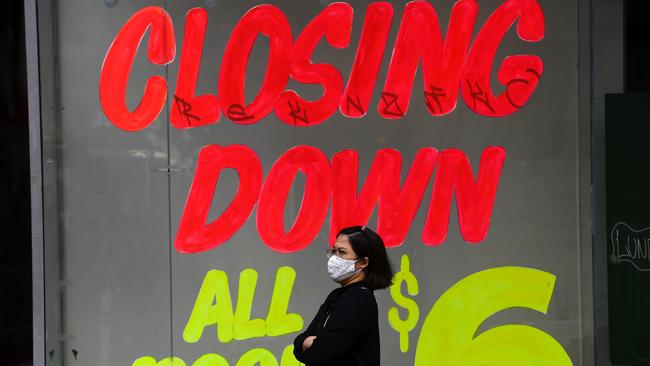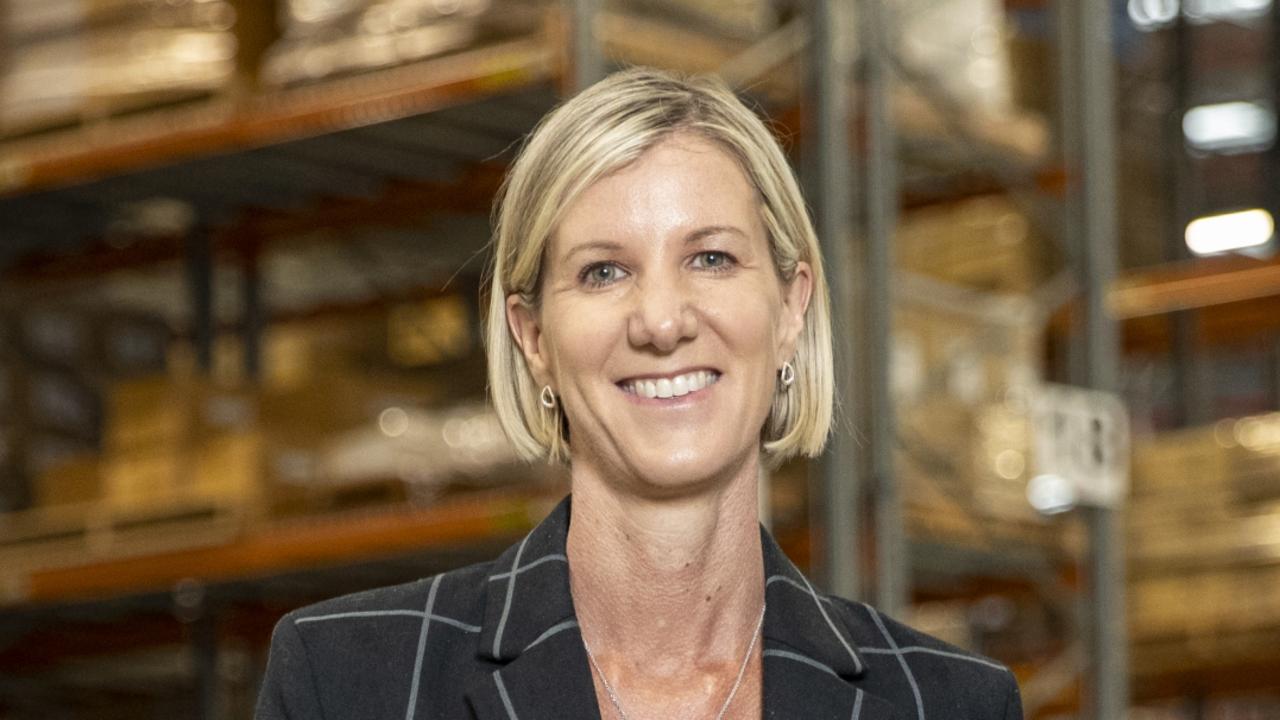CBA sees shake-out of smaller businesses in 2024 as pressures bite, cash dwindles
CBA has called out property development and also smaller hospitality and retail businesses as those that may go to the wall in increasing numbers this year.

Business
Don't miss out on the headlines from Business. Followed categories will be added to My News.
Commonwealth Bank executive Mike Vacy-Lyle expects to see a shake-out of businesses at the smaller-sized end of the market this year, as inflationary pressures, tepid demand and slimmer cash buffers bite.
This columnist expects coming weeks and the stage 3 tax cuts will be key to assessing how businesses teetering on the edge may fare between now and the year’s end.
For Vacy-Lyle it’s clear some sectors will be hit harder than others, and he called out property development and also smaller hospitality and retail businesses as among those that may increasingly go to the wall.
“If you walk down the high street and you look at coffee shops, little restaurants, those little discretionary spend shops that sell household goods … they are in trouble,” he tells this column. “People are definitely not going out and buying that sort of stuff and those businesses will be feeling pain right now.
“They will probably have below traditional cash reserves.”
Part of that issue is the challenging operating environment but also that businesses were propped up over an extended period of time through the Covid-19 lockdown years, which were characterised by government support and respite from the Australian Taxation Office.
“In a high interest rate environment there’s a lot of businesses that probably should have failed a while back who are now failing,” Vacy-Lyle, who leads CBA’s business bank, says.
His comments came as a survey commissioned by non-bank small business lender Prospa – with data firm YouGov – revealed some startling results about the cash levels of small and medium businesses. The report, which polled more than 500 businesses, found some 22 per cent of respondents said their business currently had no cash reserves.
In addition to that, about 21 per cent of respondents estimated they would run out of cash reserves in one-to-two months.

The Reserve Bank will certainly closely watch how these businesses traverse the coming months, as interest rates stay higher for longer.
The Council of Financial Regulators this month noted a rise in insolvencies for both individuals and companies, particularly small and medium sized enterprises, versus the prior 12 months as a result of higher interest repayments, cost pressures and weakened demand.
The corporate regulator’s data showed 8742 insolvency appointments up to April 30 in this financial year, compared with 6200 during the same period a year earlier.
The picture on that measure is reasonably grim, with the current financial year on track to notch up the highest rate of external administration and controller appointments since 2011.
Despite the caution, though, CBA sees many sectors faring well. Vacy-Lyle is upbeat on business lending and activity in industries including health, trades, agribusiness and real estate.
The bank has more than 1000 business bankers and has upped the pressure in recent years on the nation’s largest lender to companies, National Australia Bank.
The Sydney-based bank is drawing on its dominant position as the main transactional banker to companies across the country, in the hope of luring over their lending, merchant acquiring, payments and foreign-exchange services from rivals.
Anecdotally, Vacy-Lyle is seeing competition apply pressure to margins in business lending, but he says CBA has “multiple levers” to better manage the returns it seeks from loans. That centres on the bank looking to leverage its relationship as a transactional bank or merchant acquirer.
“Margin has been under pressure, there has been a lot of competition in this space. I think we as an organisation have been very disciplined,” he says. “Our margin has been steady, I won’t talk about this current quarter, but the quarters that you would have seen that we reported on we had three quarters of steady lending margin … across the business bank.”
CBA is also considering rolling out its scam protection technology – which checks the name and details of a payment recipient – to other financial institutions and companies seeking to better protect their own customers.
JPMorgan began trialling CBA’s scam protection system earlier this year on its peer-to-peer network. CBA on Monday said Teachers Mutual Bank and MYOB were among more recent parties that had signed up to the technology pilot.
Disrupting the disrupter
In an interesting move, CBA is throwing down the gauntlet to challenger Macquarie Group in a segment the latter has traditionally well-and-truly dominated.
Real estate payment services is an area CBA highlighted on Monday as one where it will look to take on Macquarie, and the bank’s DEFT rent and strata payments system.
Vacy-Lyle also wants CBA to win at least a quarter of the $20bn in deposits sitting across the real estate agent sector.
“Macquarie do not have the licence on innovation, we have got incredibly strong digital assets and will continue to differentiate,” he says.
“We challenged HICAPS in the medical space and you can see some of the feedback we’ve given and the real estate example is something that needs to be challenged.”
HICAPS is an electronic health insurance claims system that is part of NAB’s health unit.

Vacy-Lyle outlined that CBA banked more than one-in four real estate businesses in Australia, meaning the bank should be able to get at least that share in the deposit part of that market. Not having the requisite payments services had held CBA back.
“The lending opportunity is against rent rolls,” he adds.
Macquarie has, however, been growing strongly in business banking, albeit from a low base.
For the year ended March 31, Macquarie’s business loan book climbed 22 per cent to $15.8bn, as it moved into new segments and expanded existing ones. Macquarie has also signalled continued digital investment to improve the experience of its business customers, which are migrating to a new platform.
It’s a space where Macquarie is hoping to emulate its success in the retail market, where it has made notable inroads on mortgage market share in the past decade. The bank accounts for 5.3 per cent of the home loan market, reflecting a lending portfolio of $119.3bn.
CBA’s latest push also saw the bank strike a partnership with real estate technology group MRI Software, which has 4000 real estate agencies using its system. The tie-up, which is exclusive, but doesn’t see CBA take an equity stake in MRI, will facilitate the integration of the bank’s real estate payments solution into MRI’s software, with the aim of cutting the administration load and boosting the experience of tenants, estate agents and property managers as they make, collect and reconcile payments.
More Coverage
Originally published as CBA sees shake-out of smaller businesses in 2024 as pressures bite, cash dwindles




